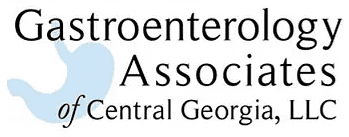About CT Scan
A computed tomography scan, or CT scan, is a non-invasive, diagnostic procedure that uses a large, doughnut-shaped X-ray machine to create multiple, high-resolution cross-sectional pictures of the abdomen and pelvic areas and the thorax, the area between the head and abdomen. With the aid of a computer, the machine can combine these images to create three-dimensional views of internal organs and body structure.
Frequently Asked Questions about CT Scan
Q. Why is a CT scan used?
A. CT scans are used to verify the presence or absence of tumors, infection, abnormal anatomy, or to examine changes in the body as a result of trauma. Gastroenterologists may order this scan to evaluate abdominal pain or to examine organs such as the stomach, small intestine, liver, pancreas, gall bladder, and colon. An abdominal CT scan also can be extremely helpful in the diagnosis of conditions like Crohn’s disease, appendicitis or colon cancer.
Q. Is there any preparation for this procedure?
A. Yes. To prepare for a CT scan, patients are often asked to avoid food and adhere to a clear liquid diet for 6 hours prior to the scan. Your physician may also ask you to temporarily stop certain medications.
The exam is usually done with an oral contrast (barium is most common), which you drink a few hours before the procedure. Additionally, the procedure may require another type of contrast, such as iodine, which is given by injection at the time of the procedure.
Q. What should I expect during an abdominal CT scan?
A. The actual scan will take only a few minutes; however, plan on being at the scanning facility for two and a half hours due to the preparations before and observation time after the procedure. You will be asked to remove all metallic materials and certain articles of clothing that could interfere with the clarity of the images.
During the procedure, you are placed on a table that slips into the center of the large, doughnut-shaped X-ray machine. Once the procedure begins, you must remain very still while the images are taken. The technician will tell you when to hold your breath and when to exhale during the scan. This helps ensure the clearest images for your physician.
Q. What happens after the scan?
A. Typically after a CT scan, you can resume your normal diet. If you received contrast material, you may be given special instructions. For example, you may be told to drink plenty of water in order to flush your kidneys. After the images are reviewed by the radiologist and the reports are provided to your physician, you will be notified of the results.
Q. Are there risks in obtaining a CT scan?
A. A CT scan is a very low-risk procedure. Some people experience a feeling of warmth throughout their body or the urge to urinate after receiving intravenous contrast material. These are temporary reactions and go away once the scan is complete and the contrast material has passed through your system. If you experience hives, itchiness of the skin or a scratchy throat, notify the technician during the scan. Although rare, there is a risk of allergic reaction to contrast materials.
The amount of radiation a person receives during a CT scan is minimal and has not been shown to produce any adverse effects. However, if a woman is pregnant, the risk to the fetus is unknown. It is critical that female patients inform the staff of pregnancy and discuss alternative methods of imaging.
Toxicity to the kidney is an extremely rare complication of the intravenous contrast material. Patients who are dehydrated, have diabetes or already have impaired kidney function are most vulnerable to this reaction. However, by following pre- and post-procedure instructions, patients can typically avoid any adverse reactions.
Q. Why do I need a CT scan instead of a traditional X-ray?
A. While traditional X-rays are an excellent method of identifying solid objects in the body, like bones and kidney stones, they cannot show physicians the detail and depth of soft tissue organs such as the stomach, intestines and liver.
Q. What is CT Angiography?
A. CT angiography is a procedure that produces detailed images of major blood vessels throughout the body. CT angiography is sometimes used to diagnose and precisely locate acute gastrointestinal bleeding.
Q. What is CT Enterography?
A. CT enterography is a procedure specifically used to generate images of the small and large intestines. CT enterography is used to detect the presence and extent of Crohn’s disease and/or inflammatory bowel disease (IBD). If an abnormality is discovered, important information such as the type of abnormality, location and severity can be further evaluated.
This content is not a substitute for medical advice, diagnosis or treatment provided by a qualified healthcare provider. Always seek the advice of your physician or other qualified health provider with any questions you may have regarding a medical condition.
